Nation's first AIDS walk marches toward 40: What we've learned and what we've forgotten
In July 1985, more than 4,000 people gathered in their walking shoes at California’s Paramount Studios, bound by a cause that until then had largely existed in the shadows.
Their grassroots motivation to take to the streets of Hollywood had intensified with actor Rock Hudson’s announcement three days earlier that he had AIDS, becoming the highest-profile figure to publicly disclose his diagnosis.
AIDS Walk Los Angeles, the first event of its kind and among its most influential, raised more than $670,000 that day. This weekend, AIDS Walk Los Angeles will hold its 40th annual gathering in a world much different from the one it faced four decades ago: While there is still no cure, a once deadly diagnosis is now a manageable condition, with the focus more on helping people live with HIV rather than helping people die with dignity.
“The first 15 years of this walk, HIV was pretty much a death sentence,” said Craig Bowers of APLA Health, which has run the event since its inception. Back then, the nonprofit agency was known as AIDS Project Los Angeles.
“There weren’t really any fruitful medical interventions," Bowers said. "The medical interventions we have today are astounding.”
That initial event would inspire other AIDS Walks to flower around the country, in cities such as New York, San Francisco, Boston, Atlanta, Miami, Milwaukee and Seattle. Especially in the epidemic’s early years, such events raised the visibility of a disease hidden behind puritan dismissals of the problem as a “gay plague,” helping to sway public opinion and raising funds for dozens of local agencies struggling to meet its needs, largely without government assistance.
“Imagine something like COVID happening with no government response and no information,” Bowers said. “That’s what it was. We lost an entire generation of mostly gay men.”
More than 700,000 people in the U.S. have died from AIDS-related causes since the disease first was identified in 1981, according to the U.S. National Institutes of Health's Office of AIDS Research.
Progress prompts renewed focus ― and complacency
Much progress has since been made in the fight against HIV/AIDS. Medical advances enable people living with HIV to achieve near-normal life expectancy, while antiretroviral therapy allows them to maintain undetectable viral loads that prevent them from transmitting the virus to others.
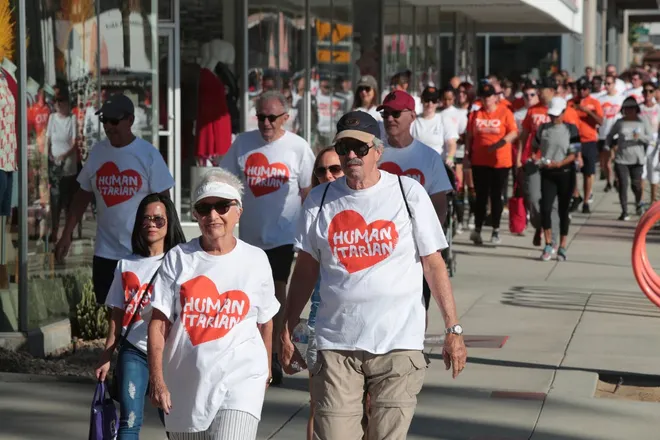
About 1.2 million people in the U.S. had HIV in 2022, according to the Centers for Disease Control and Prevention. Not all of those with the virus are aware, however; the CDC estimates that for every 100 people with HIV, just 87 know their status, with figures lowest among American Indians and Alaska Natives, Native Hawaiians and Pacific Islanders and Hispanics.
The CDC reported nearly 32,000 new HIV cases nationwide in 2022, with two thirds of infections acquired through male-to-male contact. Southern states accounted for about half of all cases.
As with AIDS Project Los Angeles, the disease’s shift from a deadly diagnosis to a manageable one aided by support services is evident in how the names of some events – and those of some entities themselves – have changed over time. In 2017, AIDS.gov was renamed HIV.gov in part to acknowledge scientific and medical advances as well as the epidemic’s altered nature, while New York’s Gay Men’s Health Crisis is now simply GMHC.
In Washington, D.C., AIDS Walk Washington is now the Walk + 5K to End HIV, while in California, the Palm Springs HIV Walk last year became the Health Equity Walk, while its sponsoring organization, formerly the Desert AIDS Project, is now known as DAP Health.
Walks now seek to address more recent challenges such as racial and economic disparities, misconceptions and lingering stigma around HIV/AIDS, all of which contribute to continuing infections or lack of treatment. But while the disease’s deadly prognosis has largely vanished, event organizers say medical advances have prompted complacency and even doubts that it still warrants attention.
“In many ways I feel like we’re back where we were, fighting to get people’s attention,” said Robb Reichard, executive director of Philadelphia’s AIDS Fund, which runs AIDS Walk Philly, launched in 1987. “That’s one of the challenges today: The progress we’ve made in treatment and prevention has led to complacency. I had somebody say to me, when I told them what I did, ‘Is that still a thing?’ And it is still a thing.”
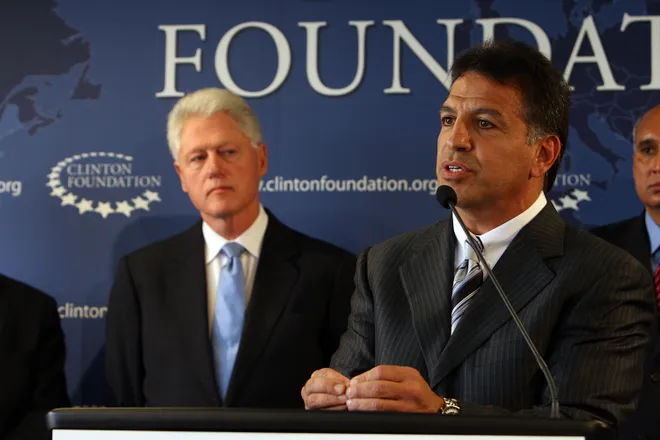
Progress, Bowers said, has been a double-edged sword.
“We have made remarkable progress, and people don’t see what AIDS actually looks like,” Bowers said. “That was a very scary, terrible thing you don’t see much today . . . Medical interventions have created a state in which if you have the disease and are getting care, you can live as long and healthy a life as someone who doesn’t. That’s remarkable progress and something to celebrate. But the reality is that the disease is still out there.”
Changing the narrative of a 'gay plague'
The early years were shrouded in secrecy, stigma and denial, with AIDS largely ignored by the White House until then-President Ronald Reagan finally acknowledged it in 1985, four years after it had been recognized by the medical community. Reagan didn’t specifically address the crisis until 1987, and more than 100,000 people died from AIDS between 1981 to 1990, according to the CDC.
“It began as a stigmatized queer disease,” said Harvard University professor Michael Bronski, author of “A Queer History of the United States.” “For the first five or 10 years, people could be fired or lose their apartments if people thought they had AIDS.”
HIV, or human immunodeficiency virus, attacks cells that help the body fight infections and can lead to AIDS, or acquired immunodeficiency syndrome. Left untreated, the condition can lead to rare lung infections and an aggressive cancer called Karposi’s sarcoma, which produces dark lesions on the skin and spreads throughout the body as the immune system loses its ability to fight back.
Reagan’s change of heart was swayed in part by actor Hudson’s revelation of his AIDS diagnosis in 1985, shortly before Hudson died from AIDS-related causes at age 59.
Shortly thereafter, attention turned to the case of 13-year-old student Ryan White, who had contracted HIV during a blood transfusion. His attempt to return to school in Kokomo, Indiana, after medical treatment incited an uproar from parents and teachers and ostracism and harassment from fellow students, but the teen would ultimately become a poster child for HIV/AIDS, drawing support from celebrities such as Elton John before his death in 1990.
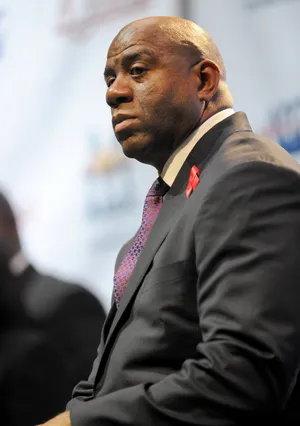
In November 1991, NBA star Magic Johnson publicly announced he had HIV, suspending his career; five months later tennis legend Arthur Ashe went public with his own HIV diagnosis and become an HIV/AIDS activist before his death in 1993. Both were instrumental in raising awareness of HIV/AIDS in the Black community, which already suffered disproportionately from the disease.
Bronski said that in those early years, AIDS walks were crucial to raising the crisis’ public profile and altering the narrative of HIV/AIDS as a gay disease.
“They actually mainstreamed it,” Bronski said. “In the early years, nobody was paying attention to people with HIV, so in a stealth way they brought gay concerns to a larger audience and made it understandable.”
Bowers, of APLA Health, said the original AIDS walks reflected an early version of crowdsourcing in the absence of federal response to the epidemic.
“This was our response, getting the message out and putting pressure on government officials,” he said. “It was really a community-centered problem-solving effort.”
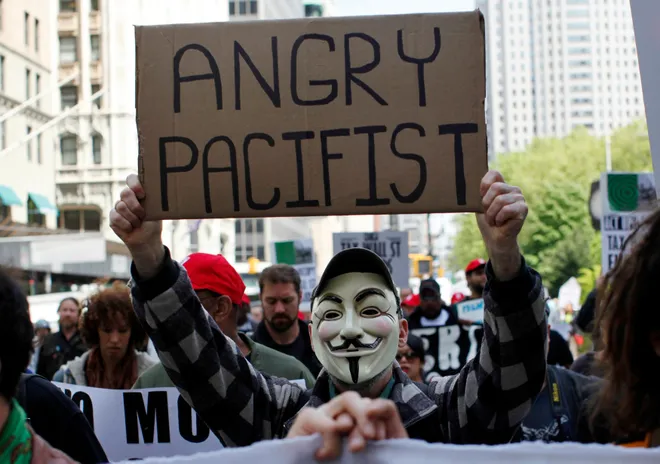
Such events, Bronski said, were part of a broader movement to force action, the more good-natured counterpart to the AIDS Coalition to Unleash Power (ACT UP), founded by playwright Larry Kramer in 1987. That group utilized civil disobedience and other direct activism to prompt changes such as pushing the Food and Drug Administration to accelerate approval of drugs to treat HIV/AIDS.
“I would argue that in any political movement you have to have those two things work in tandem,” Bronski said, citing the civil rights work of Martin Luther King Jr. and the more radically minded Black Panthers as an example. “Politics rarely functions on one trajectory. And these two actually did build a groundswell and changed public opinion.”
The challenges that remain
By the late 1990s, the availability of protease inhibitors led AIDS death rates in the U.S. to plummet. Today, organizations like APLA Health, GMHC in New York and Charlotte’s RAIN focus on more recent challenges, offering housing assistance and food pantry operations for people living with HIV.
Disparities remain – not just in terms of infection rates but access to quality services and medications. Longtime drivers of the crisis such as homelessness and poverty impede proper treatment and healthy choices.
“If somebody is unhoused, they’re less likely to be in care and more likely to engage in at-risk behavior,” said Reichard, of Philadelphia’s AIDS Fund.
Chelsea Gulden, CEO of Charlotte’s RAIN – which launched in 1992 as the Regional AIDS Interfaith Network – said HIV rates among Black men aged 20 to 40 in the region around Charlotte continue to rise, and feedback at community meetings indicates resistance among communities of color to practices such as wearing a condom or disclosing one’s HIV status to a sexual partner.
“We are hearing a lot of hesitancy around PrEP,” Gulden said, referring to the pre-exposure medication that can prevent HIV infection. “There’s medical distrust, access issues, provider biases and a lot of stigma.”
Meanwhile, she said, other sectors of the community think HIV is no longer an issue, with some people she’s approached for donations feeling that PrEP’s existence has solved the problem.
“They say, ‘Everyone has PrEP now, so why should I give to you?’ – not understanding the level of privilege that prevents access,” she said. Misconceptions about HIV/AIDS linger as well.
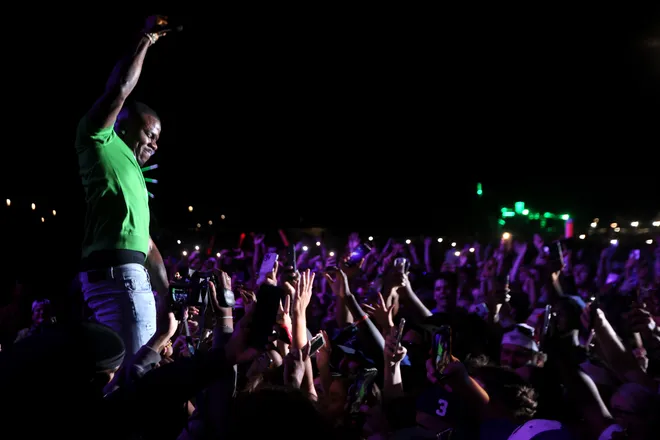
In 2021, rapper DaBaby sparked an outcry from HIV advocacy organizations after making homophobic comments at a Miami music festival, including false claims that HIV/AIDS would “make you die in two to three weeks.”
Meanwhile, a 2020 GLAAD survey showed barely half of American adults felt knowledgeable about HIV, with six in 10 saying it was important to be cautious around those with HIV “to avoid catching it.”
Reichard has seen such misconceptions play out among AIDS Fund’s clients. In the last two weeks, he’d heard about two young men who’d been living with their mothers being kicked out of their homes because they had HIV.
One of them, newly diagnosed, was evicted after his mom found out, while the other “had been living with his mom for a long time, but then a person moved in who didn’t want to share a bathroom and kitchen with him, so the son was kicked out,” he said.
“I would like to think things have changed, but when it comes down to the average person, we still face stigma,” Reichard said. “People still don’t want to talk about it with their sexual partners. We’ve come a long way in treatment of HIV, but we still have a long way to go in how we treat people living with HIV.”
Walks remain symbols of 'resistance and hope'
The medical advances against HIV/AIDS also mean that participation in AIDS walks has fallen. While about 800 people attended this year’s AIDS Walk Charlotte event in May, raising more than $170,000 for RAIN, it marked about half of the event’s peak attendance figures of 15 years ago.
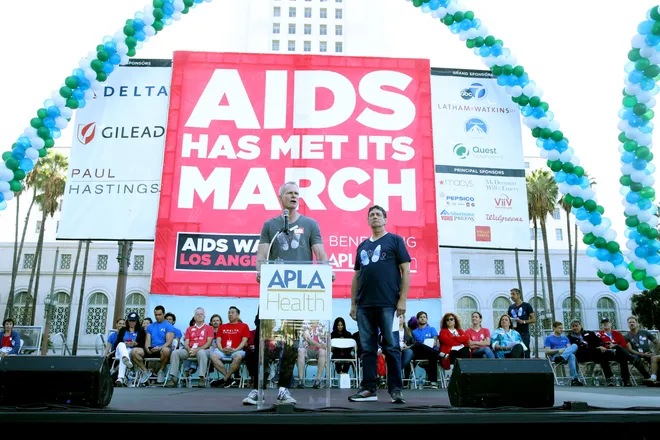
Nathan Smith, RAIN’s vice president of philanthropy, thinks fatigue is among the reasons for the decrease.
“When we started, there were not a lot of walks,” Smith said. “Now we’re fighting against so many other walks, just to get a date.”
But for many organizations, the annual walk is their one chance to promote their effort.
“Nobody wants to talk to us outside of the walk,” Bowers said. “It’s an opportunity to educate people about the current state of the disease and who it’s impacting. We have made progress, but there’s still work to be done.”
Reichard agreed, adding that walk participants remain crucial in spreading awareness simply through their fundraising and teambuilding efforts as they explain why they’re taking part.
While AIDS Fund has enjoyed rising rates of participation among young people, Reichard said they often don’t have the financial wherewithal or connections that their elders do, which inhibits fundraising.
“Some of our highest fundraisers have lost brothers or sons, but each year fewer of them are able to participate,” he said.
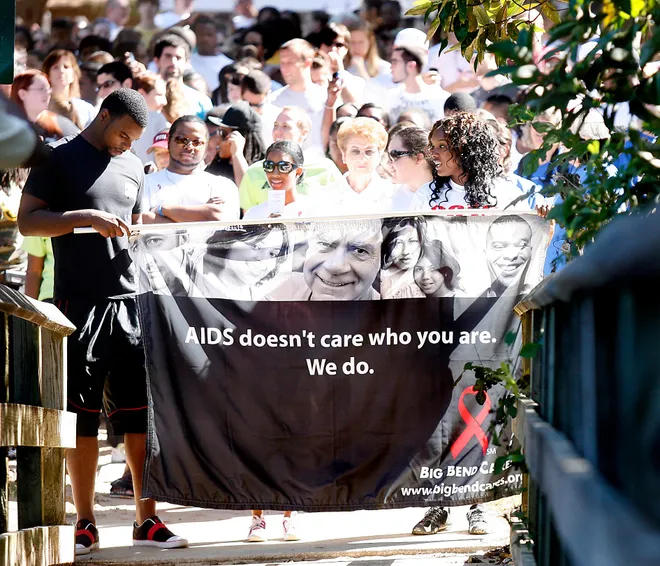
At the same time, AIDS walk veterans recognize the impact that such walks have had over the years.
Thom Medrano, development coordinator for New York’s GMHC, which organizes AIDS Walk New York, said while LGBTQ and corporate groups have been driving forces, so too have the participants who reliably assemble great numbers of team members and contributors.
“I think the AIDS Walk has become a symbol of resistance, remembrance and hope,” Medrano said. “We’ve helped people understand HIV and fought the stigma. I feel really proud of the work we’ve done.”
Reichard said it’s hard to know the real impact of AIDS Walk Philly, which has raised more than $19 million overall.
“We have always prioritized people living with HIV and HIV prevention,” he said. “From that standpoint, it’s really immeasurable to know the impact it’s had on people’s lives – did somebody not get HIV because of our prevention efforts? It provides an opportunity for media attention and interviews where we talk about treatment and prevention – and that doesn’t happen without the walk.”
Disclaimer: The copyright of this article belongs to the original author. Reposting this article is solely for the purpose of information dissemination and does not constitute any investment advice. If there is any infringement, please contact us immediately. We will make corrections or deletions as necessary. Thank you.



